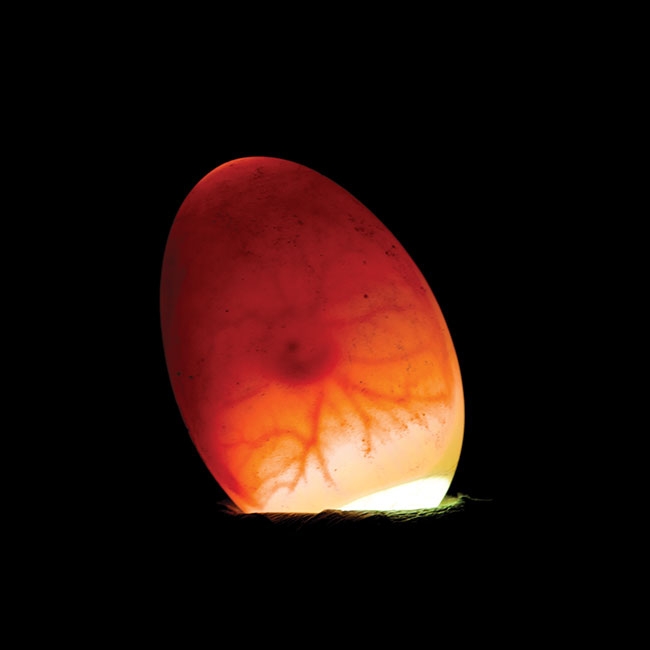
Disrupting Gene Function
By Nerine T. Joseph Ph.D Livestock Research Innovation Corporation
Features Profiles Researchers Birds with certain characteristics are of absolute importance to poultry breeders. Poultry Research ResearchManipulating gene expression in developing embryos will allow future targeting of selective breeding
 Dr. Andrew J. Bendall is designing a new tool to manipulate gene expression so that gene function can be better understood
Dr. Andrew J. Bendall is designing a new tool to manipulate gene expression so that gene function can be better understood Birds with certain characteristics are of absolute importance to poultry breeders. In terms of both broiler and layer flocks, bone development resulting in strong and healthy skeletal structure is of particular interest. Weak bone formation as a consequence of a developmental imbalance results in significant financial loss to the poultry industry. Dr. Andrew J. Bendall, a developmental biologist from the University of Guelph has embarked upon a project that aimed to design a new class of research tool to manipulate gene expression in developing embryos, which would allow researchers to decipher how these genes function in early skeletal development. Dr. Bendall described the long-term benefit to poultry producers of his research as “identifying genes that could be targeted for selective breeding for improved skeletal development and health”. This research commenced in 2011, with the identification of key regulatory genes that affect skeletal development in the chicken embryo, and subsequently have consequences for adult skeletal function and integrity. Once this was completed, the researchers were able to develop novel molecular tools that allow disruption or silencing of these gene functions. These tools were designed to not only silence one gene, and have the potential to silence multiple genes within the embryo. “Development of such tools will be of great benefit to other researchers for further studies in the chicken embryo” says Dr. Bendall. With respect to current status of their findings, Dr. Bendall explains “We identified multiple sequences that silence genes of interest and are continuing to test their effects in the embryo.” Once this is completed, they plan to further enhance the molecular tools to allow the silencing of the genes to be performed in a targeted cell type. Such tools will greatly advance poultry research, as cell type specific manipulation of gene activity has not been achieved in the chicken to date. “This project represents proof of principle for longer-term functional studies where we investigate embryonic development of the skeleton.” This project was funded equally by the Poultry Industry Council (PIC) and Natural Science and Engineering Research Council of Canada (NSERC) through the NSERC Collaborative and Research and Development (CRD) grants program.
Print this page